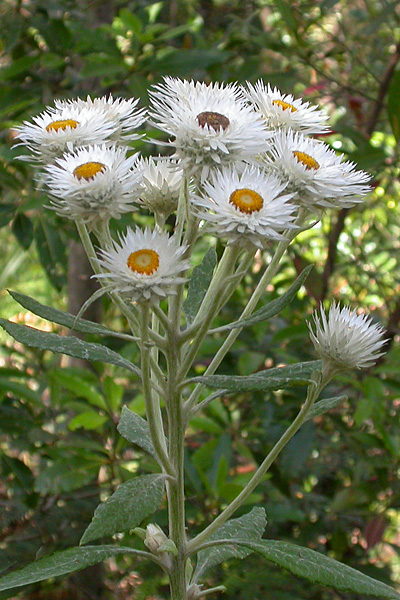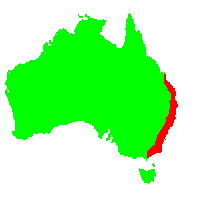General Description:
Coronidium is a genus of 17 species which were previously classified in the genus Helichrysum. They are perennial sub-shrubs found in eastern Australia.
Coronidium elatum (previously Helichrysum elatum) is sub-shrub or woody shrub from 0.5 to 2 metres in height. The leaves are greyish-green, oval to elliptical in shape and 10-12 cm long. They are covered with short hairs, mainly on the lower surface. The flower heads comprise white ray florets (the “petals”) surrounding a central cluster of small, yellow flowers. They are up to 40 mm in diameter, are born on stalks that extend above the foliage and are well displayed. Flowering occurs mainly during spring but flowers can also be occasionally seen in autumn and winter.
This species has been in cultivation for many years but is surprisingly not widely grown in private gardens. It is very floriferous and hardy in sub-tropical and temperate climates in sunny or lightly shaded and well-drained situations. It responds well to regular pruning to maintain a bushy shape and this will promote better flowering.
Coronidium elatum is easily propagated from both seed and cuttings.

Coronidium elatum
Photo: Jill Dark
 Australian Native Plants Society (Australia)
Australian Native Plants Society (Australia)













